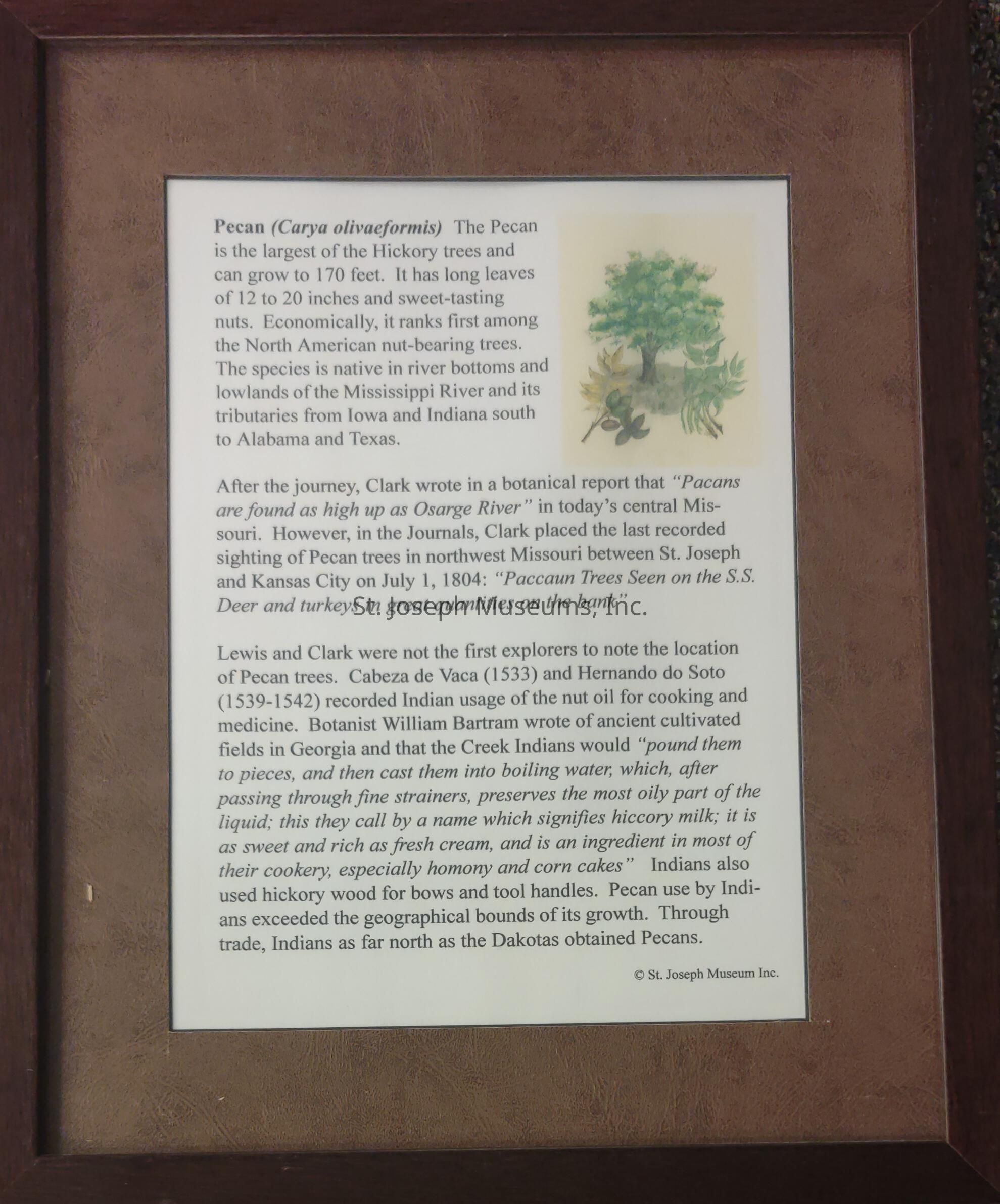Name/Title
Pecan (Carya olivaeformis)Entry/Object ID
2021.1.23 BScope and Content
Pecan (Carya olivaeformis) plant description, framed.
The Pecan is the largest of the Hickory trees and can grow to 179 feet. It has long leaves of 12 to 20 inches and sweet-tasting nuts. Economically, it ranks first among the North American nut-bearing trees. The species is native in river bottoms and lowlands of the Mississippi River and its tributaries from Iowa and Indiana south to Alabama and Texas.
After the journey, Clark wrote in a botanical report that "Pacans are found as high up as Osarge River" in today's central Missouri. However, in the Journals, Clark placed the last recorded sighting of Pecan trees in northwest Missouri between St. Joseph and Kansas City on July 1, 1804: "Paccaun Trees Seen on the S.S. Deer and turkeys in great quantities on the bank"
Lewis and Clark were not the first explorers to not the location of Pecan trees. Cabeza de Vaca (1533) and Hernando do Soto (1539-1542) recorded Indian usage of the nut oil for cooking and medicine. Botanist William Bartram wrote of ancient cultivated fields in Georgia and that the Creek Indians would "pound them to pieces, and then cast them into boiling water, which, after passing through fine strainers, preserves the most oily part of the liquid; this they call b a name which signifies hiccory milk; it is as sweet and rich as fresh cream, and is an ingredient in most of their cookery, especially homony and corn cakes" Indians also used hickory wood for bows and tool handles. Pecan use by Indians exceeded the geographical bounds of its growth. Through trade, Indians as far north as the Dakotas obtained Pecans.Context
Originally designed by the St. Joseph Museum in the fall of 2004. Titled "Botanical Wonders of the Uncharted West. The Recorded Flora of the Lewis & Clark Expedition."Collection
Lewis and ClarkLexicon
LOC Thesaurus for Graphic Materials
Botanical drawings, Expeditions & surveysArchive Items Details
Title
Pecan (Carya olivaeformis)Creator
Mary L. FletcherDate(s) of Creation
2004Subjects
Plants, Watercolor paintingsParts
Count
2Parts
Watercolor of plant and descriptive label, both framed.Condition
Overall Condition
Very GoodProvenance
Notes
"Botanical Wonders of the Uncharted West" visually depicts how well Lewis followed Jefferson's instructions. In recognition of this achievement, The S. Joseph Museums, Inc. commissioned accomplished artist Mary Fletcher to create fifty (50) selected paintings of flora documented by the Corps during their Journey. These framed watercolor originals are accompanied by similarly framed labels, generated by former Head of Research Jackie Lewin, which describe the corresponding plants with appropriate quotations from the Journals. This collection makes available for study and appreciation plants that were new to Lewis and Clark, but which Native Peoples already recognized as valuable sources of food, medicine, and tools. Some of these still remain a mystery to many, but all will enjoy their beauty, their diverse uses, and their accomplished renderings.
